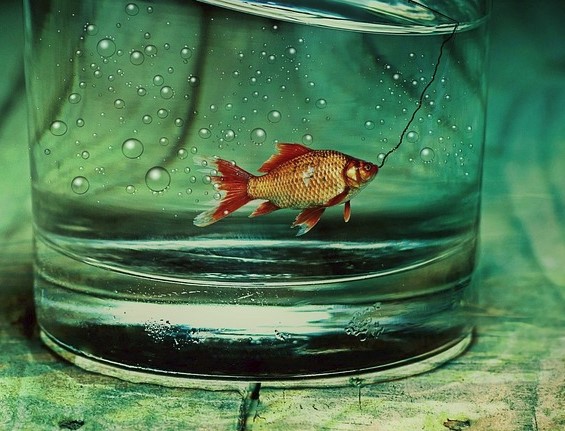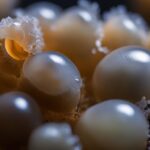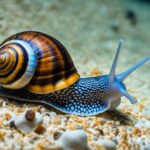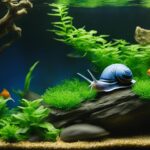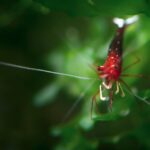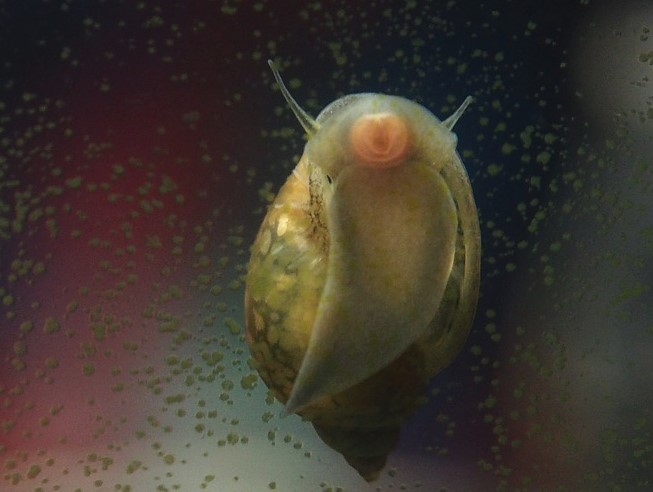
According to an Indian traditional system known as Vastu Shastra, keeping goldfish in your home increases your family’s good fortune. On the other hand, in many contemporary American homes, goldfish tanks are used to improve homes’ interior décor. The tradition of keeping goldfish in domestic aquariums has held sway even since they reportedly made their way into North America in the 1850s. Centuries later, the décor concept is still trendy.
Do you have a goldfish tank at home? If so, you can make it better when you add gastropods to it. To be clear, making it better means increasing the activities in the aquarium, enhancing the interior decoration of your home, and getting snails to clean up the tank by eating algae, leftover fish food, and dead plant matter. Additionally, gastropods in such tanks help to aerate the substrate to prevent the buildup of toxic gases and promote the growth of beneficial bacteria.
Since the fishes are predators, you may wonder if they won’t eat the snails. You are right, but I will show you the tricks you will use to stop your fish from feasting on your snails, the best snails for such tanks, and other clues you don’t get elsewhere. So, come with me…
Can Snails Survive in Goldfish Tanks?
Goldfish (Carassius auratus) is a freshwater fish from the family Cyprinidae. It is a popular indoor aquarium fish and serves as a pet for many people. Although it is native to China, goldfish is now popular everywhere, including in the United States. Because they are predators, they can eat gastropods that easily fit into their mouths. Oftentimes, they suck the snails out of their shells and eat them. Conversely, they don’t eat big snails because they cannot properly fit into their mouths.
So, if you add snails to such tanks, you have to take steps to protect them. To achieve this, you must feed the fish their proper diet. The fish eats a mixture of food, such as flakes, pellets, veggies, and live food. On occasions, you can also feed them their treats. For that, I often use cucumber slices, blood worms, leafy greens, and broccoli. Feeding them well will reduce the urge to attack your snails. That’s the trick!
7 Best Snails for Goldfish Tank
As an experienced aquarist, here’s the list I compiled for you, I call it my Best Snails for Goldfish Tank in 2023, but I will continue to update and expand as I gain more knowledge on what works best.
1. Mystery Snails (Pomacea bridgesii)
These gastropods are some of the biggest but most gentle freshwater snails available for your home aquarium. It performs well in a 10-gallon tank or more. The species also need a temperature of 24 to 30oC and a water pH of 6.5 – 7.5 for optimal performance. They can grow up to 2 – 3 inches in size and has a lifespan of about 1- 3 years. Mysteries have different shell colors, including ivory, magenta, black and blue. They eat algae wafers, uneaten fish food, veggie, and dead plant matter. This way, they keep the tank clean. Another good thing about them is that they rarely eat a live plant unless the plants are about to die. Sadly, they produce heavy bio-loads, so you should keep them in a well-filtered tank.
Pros
- Nonaggressive and easy to care for
- Requires male and female to breed
- Easy to spot their eggs and dispose of
- They clean up your tank
Cons
- They are heavy bio-loads
- Clutches reproduce many gastropods
- The female can hold sperm for a long time
2. Japanese Trapdoor Snails (Cipangopaludina japonica)
The Japanese Trapdoors are a topnotch pick for tidying up your tank at all times. Plus, being available in multiple colors makes them perfect for decorating your tank and home. The fish doesn’t feed on them. One factor that matters to them is water pH, which you should ideally keep at about 6.5 to 8. They don’t damage your freshwater plant. To bring out the best in them, ensure your water temperature is between 20 and 30oC. Because they enjoy climbing aquarium waterlines, a mesh aquarium top is critical. They love to munch on algae, dead plant matter, and uneaten fish food. In other words, you can always depend on them to clean up your aquarium. They are not hermaphrodites and can only reproduce a few times in one year.
Pros
- Peaceful and easy to take care of
- Have operculum for protection
- Can live up to a decade
- Have a lifespan of 5 years
- Keep the tank clean
- Survive in broad water parameters
Cons
- Usually nocturnal
- Need soft substrate
3. Nerite Snails (Neritina natalensis)
If you have an interest in gastropods with varied shell patterns, then Nerites just cut it! More often than not, they come in smooth but striped or spotted shells. Aside from cohabiting with goldfish, Nerites can also survive in a community of other aquatic creatures. Their adults have a maximum size of one inch. For optimal performance, ensure your aquarium temperature remains 24 – 30oC, while you keep the water pH balance between 7.5 and 8.5. They are not hermaphrodites and can only lay eggs in the tank when the males and females are present. Well, they cannot successfully reproduce in freshwater, so they require brackish water to hatch their eggs. By eating water wafers, veggies, and dead plant matter, they keep your tank clean.
Pros
- They are egg-layers
- Relatively nonaggressive
- Come in interesting patterns
- Will not overpopulate your tank
- Help to clean up the tank
Cons
- Many people find it difficult to breed
- Sensitive to change in water parameters
4. Sulawesi Snails (Tylomelania zemis)
Sulawesi or Rabbit snails originated from Indonesia and enjoy temperatures of 24 – 30oC and water pH between 7.2 and 7.8. They are gorgeous and have long, pointy shells. Typically, this species grows between 3 to 5 inches long and has antennae similar to that of rabbits, which informs the name Rabbit. They would jump at algae and veggies upon sighting them. Similarly, they would nibble on plants with soft leaves and stems if you don’t feed them properly. As a result, they are excellent cleanup crewmembers in the aquarium. They are not hermaphrodites; I noticed their babies appeared every 4 to 6 weeks. They also break down organics into nutrients for aquatic plants to utilize them.
Pros
- Nonaggressive and easy to take care of
- No room for overpopulation
- Gorgeous creatures for apartment beautification
- Great for cleaning up the aquarium
- Too big for goldfish to eat
Cons
- They are costly
- Slower than other species
- Sometimes eat live plants
- Need large tanks
5. White Wizard Snails (Filopaludina martensi)
Although these snail species are related to the Japanese Trapdoor species, they are slightly larger and shyer. They eat tank algae when they are in the tanks, but they aren’t good at clearing the entire aquarium like their counterparts. However, White Wizards are unique because they have special gills for filtering feed. If you have plants in your tank, don’t worry about it because they won’t feast on them. They aren’t hermaphrodites and reproduce slowly. In other words, you shouldn’t expect any population explosion. On the flip side, they are not affordable. If you have a rowdy goldfish in your tank, you will notice that White Wizards are often nocturnal and withdrawn. They actively aerate sandy substrate. Ensure you maintain a 6.0 to 8.0 water pH and temperature of 22 – 26oC.
Pros
- Slow in reproduction
- Can filter food
- Nonaggressive in nature
- Good scavengers in tanks
- Do not eat live plants
Cons
- Mostly aerate the sandy substrate
- It is costly
- Rare and not readily available
- Shy and mostly nocturnal
6. Cappuccino Spike (Faunus Ater Var)
Also known as Black Devil Spike snails, Cappuccino Spike snails are stunning with long, pointed shells of brown and tan. A close look at their spike-like points and range shows that they have shades of amber to red, and chocolate brown to deep black colors. Indeed, those attributes make them ideal for decorating the aquarium and home. Apart from their unique physical outlook, Cappuccino Spikes tend to move faster and are more active than other snails. They are similar to Sulawesi. To keep them happy, serve them a meal of algae, decaying plant matter, or leftover fish food. They can be as big as 3 inches when they are fully grown. As regards the adequate temperature and water pH levels, these are 22 – 28oC and 6.8 – 7.5 respectively. Caution: Ensure you keep them in a tank with the sandy substrate so they can burrow it.
Pros
- Peaceful and easy to take care of
- Do not overpopulate freshwater tank
- Burrow into the substrate
- Help to clean the tank
- Fun to watch due to their hyperactivity
Cons
- Eat tender and leafy plants
- Active burrowing only in sandy soil
7. Ramshorn Snails (planorbarius corneus)
Here’s a beautiful snail species often used for aquarium and home decoration. Ramshorn grows to about 0.25 – 1 inch and enjoys temperatures between 22 and 28oC. They are hermaphrodites and can reproduce asexually. Once there is enough food for them, these species will continue to reproduce until they take over the entire space. Due to their various colors, many aquarists consider Ramshorn snails the most beautiful for aquarium decoration. Well, I agree with them. However, they have no operculum, which makes them prone to harm. Additionally, they love to breathe air, which often makes them creep to the top of the tank in search of air. Therefore, I strongly advise you to use a tank that has a lid if you intend to opt for this snail.
Pros
- Nonaggressive and easy to care for
- Sometimes, goldfish eat them (population control)
- Perfect for decorating the aquarium
- Keep aquarium clean by feeding on algae and dead plant matters
Cons
- May eat live plants
- Creep away from open aquariums
- May cause a population explosion
Tidbits for Managing Snails in Goldfish Tanks
If you have a small goldfish tank, you have to take specific precautions I will share here. First, some snails (such as Sulawesi) grow into adulthood and become very tall. The implication is that if you use a small tank, they will become uncomfortable and won’t be free to move about. Second, Mystery snails produce a lot of bio-load. Therefore, I won’t advise you to use a small tank. In general, overcrowding contributes to the outbreak of snail diseases, so go for a big tank (10-gallon capacity or bigger) and always keep an eye on them.
Concerning water parameters, you should ensure your water pH ranges from neutral to alkaline. It is only on a few occasions that you come across gastropods that enjoy acidic water. You also have to monitor its GH and KH levels to ensure that the water isn’t too hard or soft for the creatures. Sure, go for gastropods that have similar water parameters as your goldfish. By and large, the fish can easily adjust to several pH levels. Caution: always be mindful of the cycling of the tank. Therefore, you have to factor in your water quality and pH balance. But then, based on my experience, the fish do well in water pH between 6.5 and 7.5.
Final Thoughts
On a final note, I have walked you through the 7 best snails for goldfish tank because I have tried them. I advise you don’t go outside of the list I have compiled for you because it gives just what you need. Thankfully, caring for almost all the snails I have reviewed here is no rocket science. Did I forget to mention that copper is like poison to snails? Yes, it is. Instead, feed your snails with calcium-rich food because it strengthens the shell.
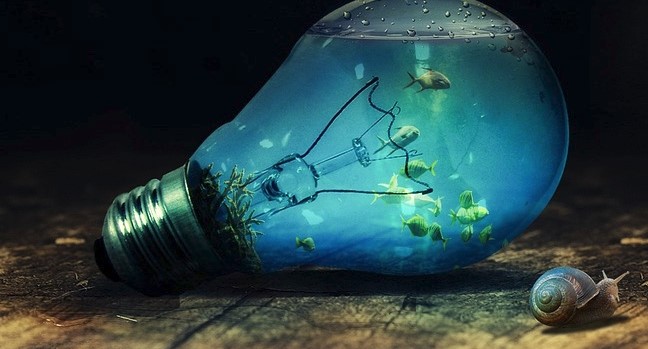
Furthermore, if you plan to breed those that don’t grow quickly, you should go for Nerites. On the other hand, if you desire those that beautify your aquarium and apartment, you should go for the Ramshorn because they are colorful. The good thing about the snails I have reviewed here is that they grow into big sizes that are too big for goldfish to consume.
However, don’t forget that the fish eat snail eggs. That said, the best bet is to feed your fish well, so they don’t have a reason to attack your snails. At this juncture, I have given you the essential tidbits needed to add snails to your tank, so do it now!
If you have a Betta tank and considering adding snails. Check out my similar post covering best snails for Betta tank.

